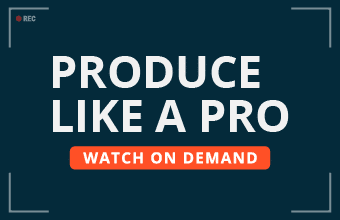Most brands view social media as a great marketing platform, a place they could connect with their customers and expand their customer support services. Unfortunately, too many brands fail to see beyond that. More specifically, they fail to utilize the full potential of their social media data.
That’s a real shame because social media data can inform so many decisions in your business, from future marketing strategies to PR campaigns and even product development and enhancements. Social media data can even show you where the market is headed, allowing you to position your brand strategically.
Read on to understand how to use social media data to grow your business.
1. Build trust by gathering user-generated content
According to Bright Local, 84 percent of consumers consider brand reviews before buying. Prospects will trust your brand more if they hear positive reviews from actual people instead of what they get from marketing ads.
UGC is rich social media data that you can use to build trust with your prospects. And compiling this data is pretty straightforward. For starters, you can develop a brand hashtag that’ll help you track all the UGC easily. Beyond that, you could use social listening tools to monitor brand mentions and other keywords related to your business.
After gathering the data, you can now use it in your PR and marketing campaigns. The UGC will convey honesty and reliability. This is critical considering 90 percent of millennials make buying decisions based on the brand’s authenticity.
Glossier is one of the brands that has harnessed the power of UGC in trust building and marketing. Here’s an example of their campaigns.
This is one of the company’s Instagram posts. The hashtags and name mentions are a great way to generate UGC for the brand.
2. Give insights into competitors
To stay ahead of your competitors, you must analyze their performance and measure it against yours. However, you won’t get this information by calling your competitors and asking them for insight. Instead, you can analyze their social media activity, posts, and marketing campaigns. For instance, you can check the Facebook ads library to see the campaigns they are running.
You can use social media competitor analysis tools to track the social media activities of your competitors. You can check the engagement levels, most popular posts, time of posting, etc. These data points can be instrumental in crafting your own social media campaign. You can also learn from your competitors’ PR crises to enhance your own PR strategy.
When doing competitor analysis, you can use excel forecasting to help you predict future trends. Having this kind of information will place you ahead of the competition.
3. Provide improved customer service
The customer service your clients get on your business directly impacts the profitability rates. It’s easier to retain a customer with good customer service than to acquire a new client.
Repeat clients are 300 times more likely to spend more buying from you than getting a new customer to buy. Improved customer service also boosts your business PR because it helps build your brand reputation.
Social media data can help create a more personalized and meaningful customer experience. Analyze the comments from your social media posts and identify what your clients would like from you.
You can also use this strategy to identify gaps in your customer service. If a customer didn’t like the experience they had with your business, they’re likely to leave a negative comment online. Use such comments to identify and rectify holes in your customer service. For example, you might ask people on your customer service team members to share a digital business card with customers, so they know the best way to connect again in the future. That might make your customer service team appear more personable.
You can also use clustering analysis and social media polls to determine customers’ preferences. This will help you improve your service or product so that it’s more aligned to what your customers want. Here’s an example of how LinkedIn gathers user opinions to help them improve the user experience.
Furthermore, you can practice social listening by observing the mentions and hashtags on your business. These will help you improve your services and create room for more return clients.
4. Create effective marketing campaigns
One effective way to optimize your marketing plan by enriching your sales funnel with social content. You can use social media data to analyze what you need to do at every sales funnel stage.
Your social media pages are a great source of lead generation if you can use them appropriately at every stage of your funnel. You can collect social media data from past social media campaigns and create better ones.
At the awareness stage of the funnel, you can collect data from successful social media adverts and use it to improve your adverts. You can gather such data from social media sites such as Facebook and Instagram by analyzing your competitors’ successful campaigns.
You can also collect email information and build a list from the social media followers you get after every successful marketing campaign. You’ll use the email list to enquire what aspects of the campaign the customers love, and what you’d need to improve.
You can also use social media data from influencers who market your product or service to improve your products or services.
Here’s an example of how Charlotte Tilbury uses Instagram posts to market their beauty products. They then use the feedback they get on such campaigns to improve the brand.
The social media data you gather from your marketing campaigns should help you improve your sales funnel. You’ll know which campaigns work, which ones need improvement, and which ones you need to discontinue. For instance, you can strengthen the brand awareness campaigns that fetch you more prospective customers on specific social media platforms.
5. Create engaging content
The type of content you create for your brand can either make or break it. You need to create content that captures your readers and prompts them to buy from you.
Social media data can help you create more engaging content for your audience. For instance, if you use visuals and videos to market your brand, social media data from competitors and your past content can help you improve your current content.
Social media data can help you understand the types of posts that generate more sales. You can then focus on improving such posts to grow your business.
In conclusion
Social media data can elevate your business and earn you more profits. You use the data to reach a wider client base and groom returning customers from your already established customer base.
If you use social media data to build trust for your brand, gain insights into your competitors’ strategies and improve customer service, you can gain more customers and have a competitive edge in your industry.











